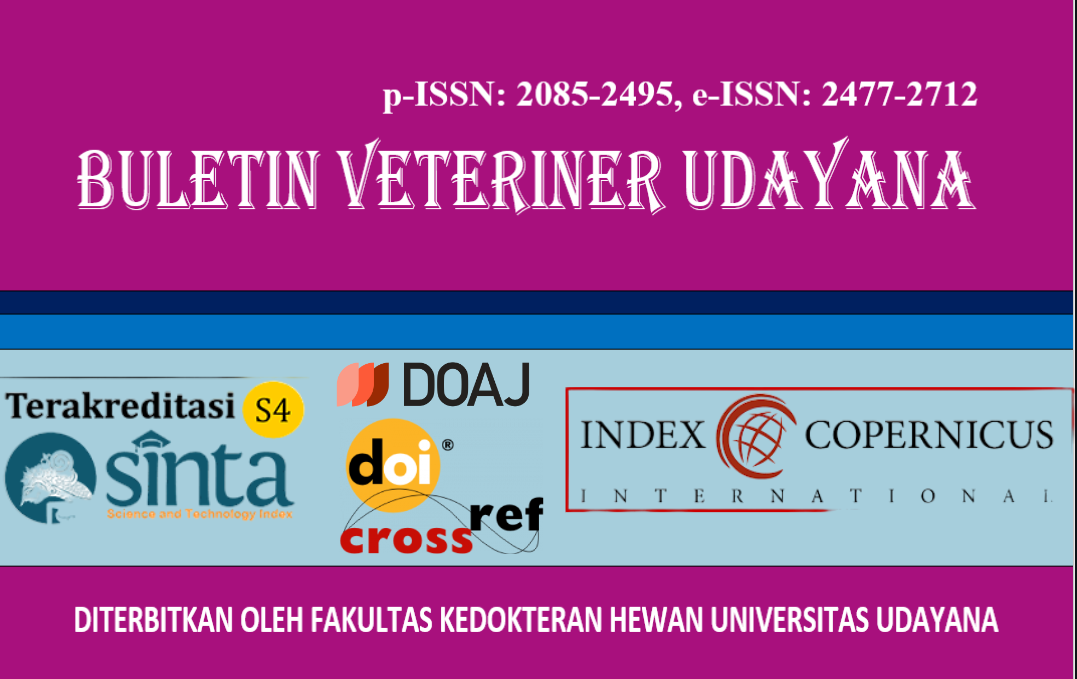ANTIBIOTIC SENSITIVITY OF ALPHA-HEMOLYTIC MUCOID ESCHERICHIA COLI FROM DIARRHEIC BALI CATTLE TO KANAMYCIN, ERYTHROMYCIN, AND AMPICILLIN
DOI:
https://doi.org/10.24843/bulvet.2025.v17.i04.p02Keywords:
Escherichia coli, diarrhea, bali cattle, antibiotic resistance, sensitivity patternAbstract
Diarrhea in Bali cattle caused by Escherichia coli alpha-hemolytic mucoid strain can lead to significant economic losses due to reduced livestock productivity. To address this issue, this study evaluated the antibiotic sensitivity patterns of E. coli isolates to kanamycin, erythromycin, and ampicillin. A total of 11 E. coli isolates were obtained from the feces of diarrheic Bali cattle and tested for antibiotic susceptibility using the Kirby-Bauer disk diffusion method on Mueller-Hinton agar. The inhibition zone diameters were measured and interpreted according to Clinical and Laboratory Standards Institute (CLSI) guidelines, categorizing the isolates as sensitive, intermediate, or resistant. The results revealed varying susceptibility patterns among the isolates. For kanamycin, 81.8% of the isolates were susceptible, 18.2% showed intermediate susceptibility, and none were resistant (0%). In contrast, all isolates (100%) exhibited complete resistance to both erythromycin and ampicillin, with no susceptibility or intermediate resistance observed (0% each). These findings underscore the critical need for prudent antibiotic selection in treating E. coli-induced diarrhea in Bali cattle. Additionally, this study highlights the urgency of further research into resistance mechanisms and the development of sustainable infection control strategies.




